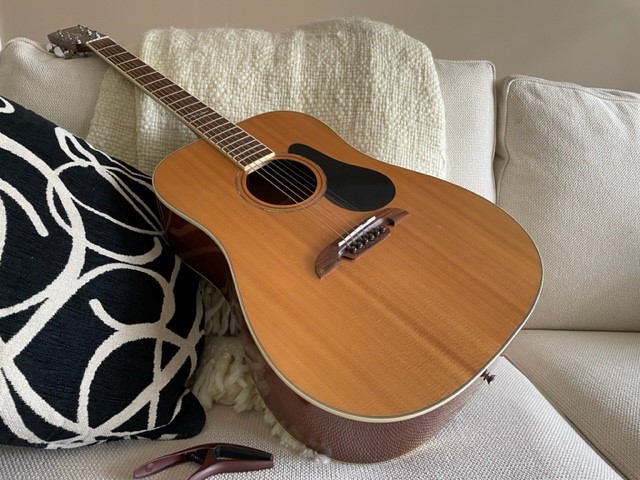For years, I’ve been telling people “As soon as I finish my studies, I’ll start playing piano.” I finished my Master’s in 2012 and then life got in the way. Moving Down Under and restarting my career in another country put my music aspirations on the back burner. Finally, this year January, I started with guitar lessons. Not piano, because I figured out that a guitar would be much easier when going camping.
I never played an instrument before, so being an absolute beginner was an eyeopener. The experience taught me a lot about me and confirmed basic instructional design principles (and the fact that I’m not a great singer). Let me share a few of my reflections.
I need visuals
I noticed that only showing me how to play a chord, telling me what to do, or watching an instructional video doesn’t work for me. I therefore ask my guitar teacher each week to write down the chords, the strumming or fingerpicking pattern I need to practise. Even if it’s a video lesson, they’ll now use the whiteboard for an additional visual.
ID principle: Provide clear instructions and use visuals to help the learner retain the knowledge.
Give me guidance
One of the teachers I had, didn’t prepare the lessons. They asked me what I’d like to do. Well, I’m new to playing guitar. Learning a new skill can be overwhelming and I wouldn’t know where to start. As a novice, I need someone to hold my hand and, for example, tell me what strumming pattern goes with what song and then teach me how to play it. I’ll tell you when it’s time to let me fly solo. ID principle: Adapt your lesson structure and content to the learner’s level and use scaffolding.I prefer interleaving
Playing guitar comes with many challenges. At some point I got stuck on the strumming. Now, we no longer focus on one skill at the time. We mix music theory with strumming, fingerpicking and learning new songs and chords. It might be a bit more challenging to change topics all the time, but it makes learning more fun too. ID principle: Interleaving can be more effective than blocked practice but is more challenging for the learner.Finding the flow
I had this epiphany moment: my practice sessions follow Csikszentmihalyi’s flow model. I’m always up for a challenge. I might practise several hours to ‘master’ the combination of playing chords, adding a strumming pattern and sing all at the same time (and belief me, that’s hard for a beginner). But I’ll mix it up with a few songs that I can already play reasonably well, balancing the challenge with the ability. That keeps me going!
ID principle: Ensure a balance between challenging and easier activities to create a learning flow and motivate the learner.
Learn and reflect
I can only recommend learning a new skill. Then reflect on the learning experience and find out how you can benefit from your experience as an instructional designer. And don’t forget to have fun while you’re learning!

